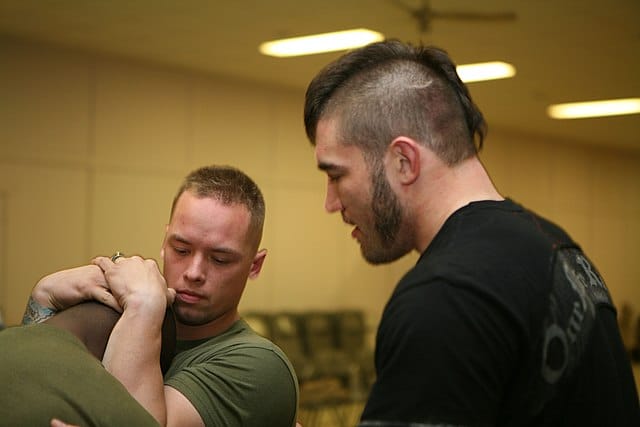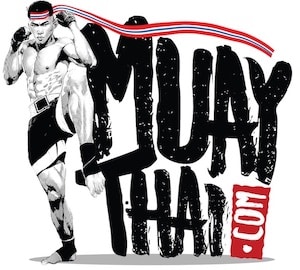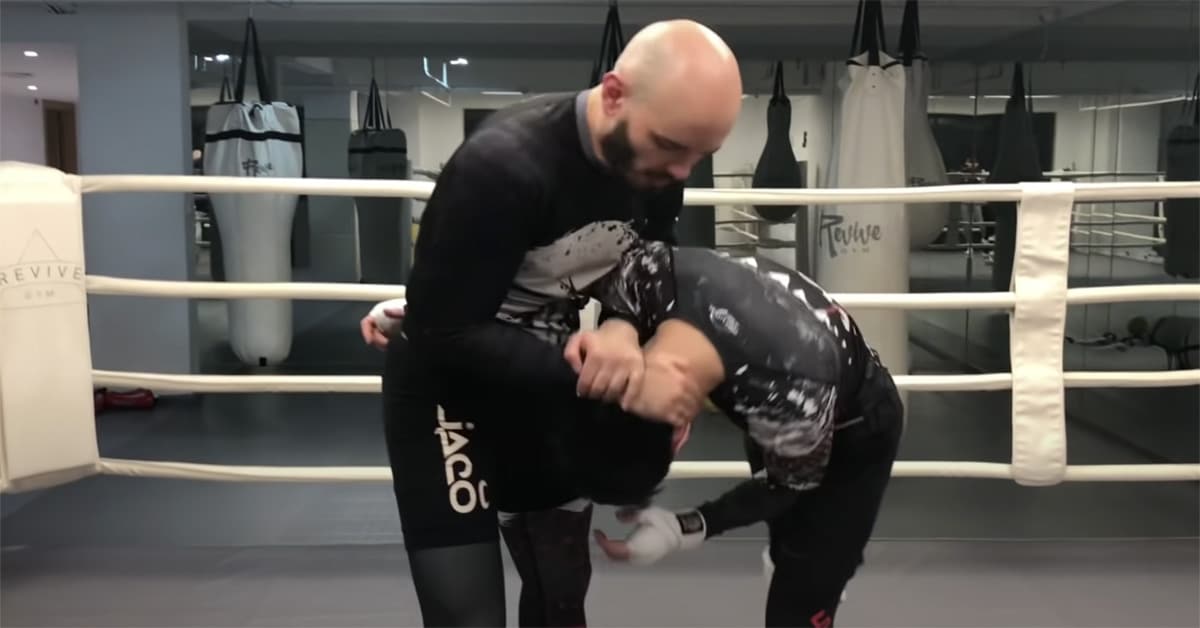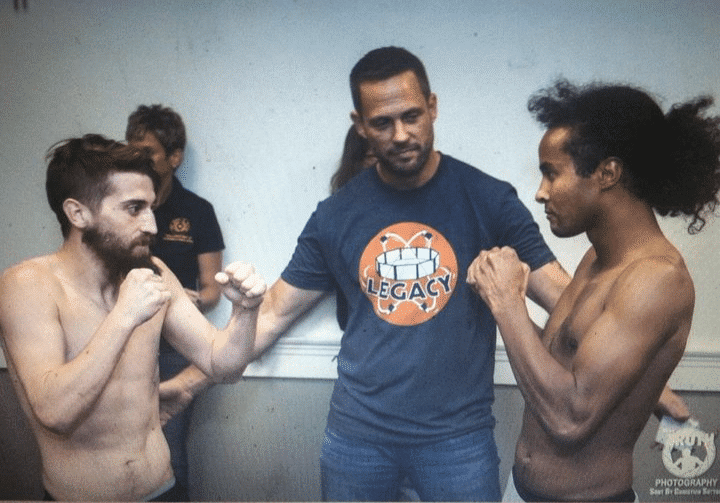Clinch Fighting: A How to Guide For Muay Thai
Clinch fighting is a major aspect of Muay Thai. Fighters battle for position and control to set up devastating strikes.
Here is a complete clinch fighting guide for beginners. We’ll detail why this type of fighting is done, how it’s practiced, and how to hold clinches properly.
What is Clinch Fighting
Clinch fighting in Muay Thai is an aspect of Muay Thai where fighters fight for inside control. Fighters will tie up their opponent’s arms and head to defend strikes while setting up strikes.
Everything from strikes, sweeps, and defense is performed within a clinch fight. It’s an important part of the sport, which is why fighters spend hours a week practicing clinch fighting.
Do Other Martial Arts Use Clinch Fighting?
Clinching fighting isn’t only performed in the art of Muay Thai. Various other martial arts use clinch fighting tactics.
- Amateur Wrestling
- Boxing
- Kickboxing
- Judo
- BJJ
- No-Gi Jiu Jitsu
How is Clnch Fighting Practiced?
Clinch fighting in Muay Thai is practiced similarly to how wrestling is practiced. Thai boxers will do rounds of technical drilling and live sparring.
In clinch fighting sparring, the fighters will fight for positioning to control their opponent to sweep them or land knees. For this type of clinch sparring, the fighters may add knees to the body or strikes to the head.
This is for the fighters to be mindful of getting injured and go months without earning money. That’s why they keep a fighting pace with the movement and limit the types of strikes used.
Basic Clinch Fighting Positions
Clinching fighting comprises various clinching positions that all beginners must know. Here are detailed breakdowns of six basic clinch fighting positions.
Double Collar Tie
The double collar tie is the classic Muay Thai clinching position. In this clinching position, a fighter controls their opponent with two hands hooking the back of their opponent’s head.
To put on a good double collar tie, start by cupping your hands and hooking at the base of your opponent’s head. Aim to hook your hand right where your opponent’s head and neck connect.
Your other hand will cup on top of your primary hand to reinforce the clinch. From here, your goal will be to keep your elbows closed as you break your opponent’s poster.
Aim to make your opponent’s chin touch their chest to have full control of them. From here, fighters will drive powerful knees into their opponent or unleash a nasty elbow strike.
Cross Face
In Muay Thai clinching fighting, there is a defensive clinching position called a cross face. It’s similar to the cross face in amateur wrestling, but the Muay Thai version also defends against strikes.
You must quickly react to an opponent’s clinching attempt to get into the cross-face position. As the opponent comes in, you stiff-arm their chin with one hand and reinforce it with the other.
To successfully cross-face your opponent, you need to really palm their chin and push with force. This will ensure they don’t get their clinch position and allow you to set up counters.

Single Collar Tie
You must know that the single-collar tie is a basic clinching position in Muay Thai. In this clinch fighting position, a fighter has one collar Thai on their opponent’s head, with an inside arm tie.
The arm doing the inside tie should be hooked above the opponent’s bicep, with their head in tight. You should aim to keep your elbow closed to hold a good inside arm tie.
In Muay Thai, the purpose of this position is to block your opponent and open up inside attacks. Everything from elbows, knees, or sweeps are open in this position.
Single Collar Tie w/ Overhook
Another version of the single-collar tie is one with an overlook. One hand is hooking the opponent’s head as the other arm has a deep over-hook over the other arm.
You must dominate your opponent’s arm with a tight hook to put on a good overtook in Muay Thai. Aim to hook your bicep against your opponent’s tricep and try to pull their shoulder down.
This lets you compromise their fighting stance and open them up for different strikes or sweeps.
Double Underhooks
Double underhooks are a great defensive position in clinch fighting. When a fighter’s opponent comes in to grab a clinch, the fighter counters by getting double underhooks.
When you grab double underhooks, hook your hands together and be sure to use them to lift your opponent up. Good double underhooks will give you full control over your opponent’s arms. This position also allows you to set up powerful throws.
Basics Clinch Fighting Techniques
In the clinch, there are various attacks you can use. Here are some of the most basic clinch fighting technique setups.

Elbow From Cross Face Position
Here is a nice elbow strike setup you can do when your opponent has double collar ties. Counter their collar tie with a cross-face across their face/neck.
Your backhand can either reinforce your cross-face inside tie your opponent’s other arm. With your cross-face, you can use it to push your opponent’s head to make space and hit an elbow strike.
Double Under Dump
Dumping your opponent with double unders is among the most common Muay Thai throws. When you get double underhooks, remember to hug your opponent high and tight.
Your lead knee also needs to be positioned between your opponent’s knees. Once you’ve controlled the position, turn your opponent like a wheel and dump them to your chosen side.
Exiting Knee or Roudhouse
Knees and roundhouse are common break attacks when exiting a clinch fighting position. You can even tie them together on the same technique when you’re disengaging the clinch.
From inside collar ties or single tie variation, throw a knee and break off the clinch by pushing your opponent’s head. Push their head to guide them into a nice roundhouse kick.
Important Tips to Remember When Clinch Fighting
When you first begin practicing clinch fighting, there are important details you must remember. Here are some important tips to remember when clinch fighting.
- Inside Positioning: Controlling the inside of your opponent’s arms is a major key to winning in clinch fighting. Getting inside positioning allows you to defend your opponent’s attacks while simultaneously setting up your own attacks.
- Head Positioning: Remember to keep your head against your opponent’s or, even better, under their chin. Don’t give your opponent space to clinch your head or get off an elbow.
- Foot Positioning: Always remember your foot positioning before getting to a clinch fight. Your opponent will dominate the position if you don’t have a strong and balanced stance.
- Break Posture: All offensive techniques in clinch fighting require breaking your opponent’s posture or compromising their balance.
- Be Aware of The Danger: Clinch positions are dangerous and can quickly go bad if you lose the positioning battle. This is why you must drill to improve your clinch game.
- Drill & Spar: The only way to get good at clinch fighting is hours of drilling and live clinch wrestling. Only then will you develop a decent clinch game.
The Final Word
Clinch fighting is a crucial part of Muay Thai that a practitioner must know. Not only to improve at the sport but to better defend yourself on the streets. Drill the techniques and remember the tips above to improve your clinch fighting skills.


